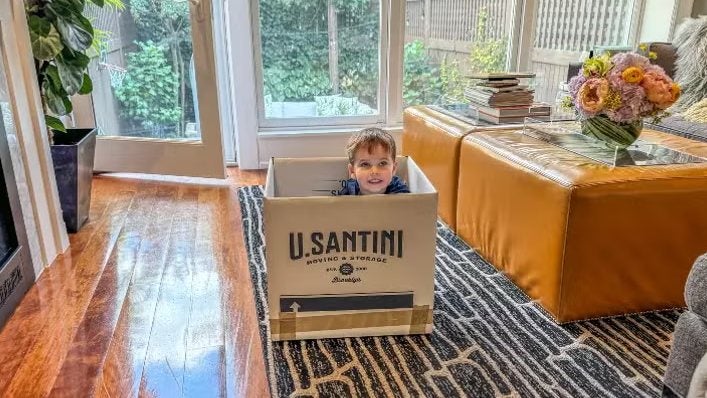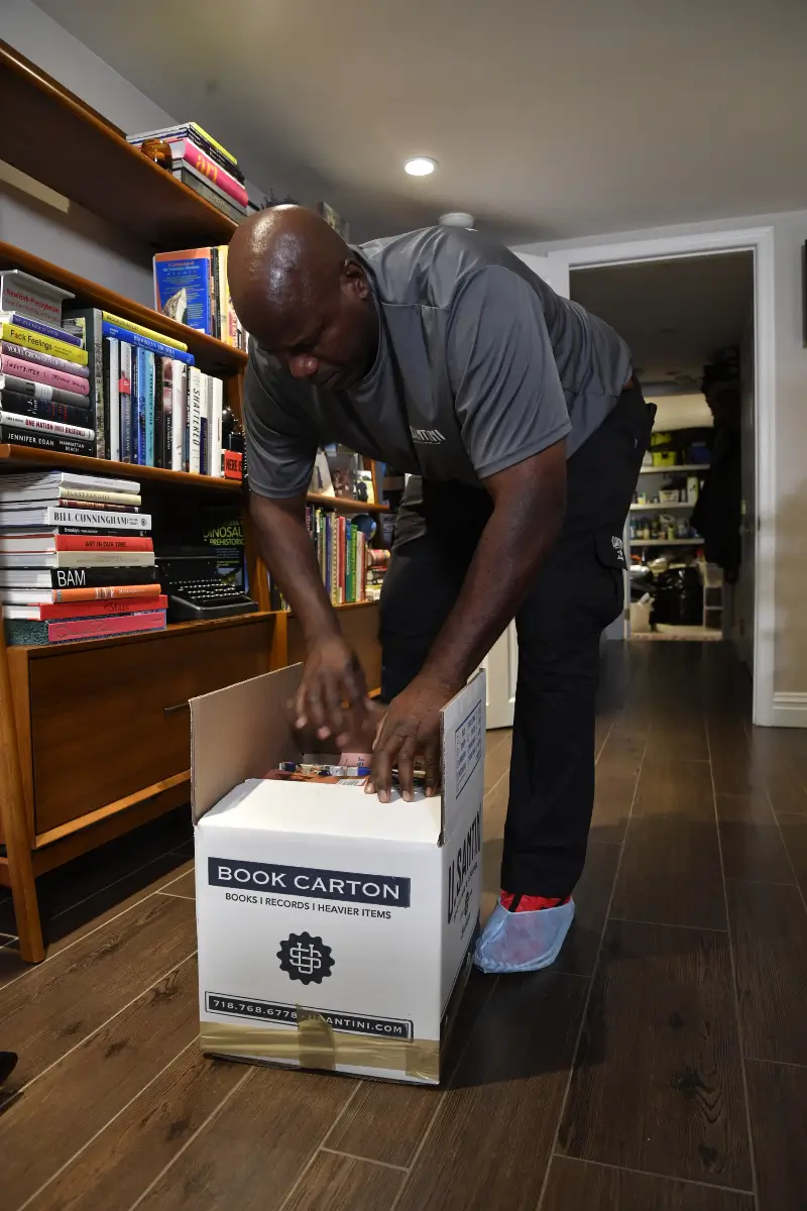What to Pack First When Moving

Preparing for a move can feel more manageable with a clear plan. Knowing what to pack first when moving sets the foundation for a smooth transition, especially for those in New York City and the surrounding areas. At U.Santini Inc. Moving & Storage, we focus on helping you prioritize essentials, streamline your packing process, and minimize stress. From organizing daily necessities to handling fragile items, this guide will help you start packing confidently and easily. Moving down the street or across the city becomes efficient and stress-free when you have the right approach. Let’s explore our tips on how to make packing efficient and manageable.
Have a Plan Before You Start to Pack
A plan before packing is essential for a smooth and efficient move. Organizing your belongings and knowing what steps to take ensures everything is handled correctly, saving you time and reducing stress. A clear plan paves the way for a focused approach, helping you avoid common packing mistakes. With the proper preparation, you can prioritize tasks, make better decisions about what to keep, and set yourself up for success in your new home. Below is a simple guide to help you create a packing strategy that works:
- Take Inventory: Start by taking note of everything you own. Go room by room and list items you use daily, occasionally, and rarely. This will help you determine what to keep, donate, or throw away before you pack.
- Declutter and Downsize: Sort through your belongings with a critical eye. Remove items you no longer need or use to lighten your load. Donate worthy items and discard broken or unnecessary things to make packing much more manageable.
- Gather Packing Supplies: Before you begin, collect boxes, packing tape, bubble wrap, and labels. Having these tools ready ensures you can pack effectively without interruptions and keeps your items secure during the move.
- Organize Essential Items First: Pack the items you need immediately at your new home, such as toiletries, clothing, and important documents, into a labeled box. This ensures easy access once you arrive.
- Label Everything: Mark each box with its contents and the room it belongs to. This minimizes confusion during unpacking and lets you quickly identify priority items.
Start Packing Room By Room
Packing room by room is a thoughtful approach that keeps you organized and prevents you from accidentally packing the essentials you need daily. Focusing on one area at a time makes the process manageable and ensures everything is accounted for. This method helps friends or family pitch in and let you know where to start, letting you focus on high-priority spaces while they handle fewer essential areas. Packing in the proper order reduces stress and makes unpacking at your new place smoother. Follow this room-by-room strategy to simplify the process effectively:
- Garage: Begin with the garage. Most items stored here, such as tools, seasonal decorations, or sports equipment, are rarely used daily. Pack them securely in sturdy boxes and label each according to its contents for easy access later.
- Guest Room: The guest room, often used the least, is another easy starting point. Pack up bedding, furniture, and any décor, ensuring fragile items are well-protected. This clears up space and gives you more room to arrange packed boxes.
- Basement or Attic: Pack items from your basement or attic, focusing on things in storage like keepsakes or rarely used appliances. These areas typically hold non-essentials, so clearing them early won’t disrupt your daily routine.
- Study: Sort through books, documents, and office supplies in the study or home office. Pack items you don’t use daily, but keep any vital paperwork and electronics accessible for last-minute needs.
- Kitchen: Pack kitchen tools and appliances you don’t use daily, such as specialty cookware and gadgets. Save essential cooking items so your family can continue eating at home until moving day.
- Living Room: Pack décor, entertainment items, and furniture from the living room. Keep a few items out, like a TV or board games, for entertainment during downtime as moving day approaches.
- Bedrooms: When packing bedrooms, start with out-of-season clothing, less-used items, and decorations. Keep basic daily items accessible until closer to your move to maintain your routine.
- Bathroom: Pack up bathroom supplies last. Keep daily essentials like toiletries and medications in a small, easily accessible bag for convenience during the move.
What to Pack First?
Starting your packing process early is crucial to ensuring a smooth move. The best approach is to begin with items you don’t use daily. Focusing on non-essential belongings will help you progress without disrupting your daily routine. This systematic method also allows you to reduce the stress of last-minute decisions. Organizing your packing into categories makes managing it easier, creating clear steps toward an efficient move. Below is a guide to what you should back first, with suggestions to simplify your organization:
- Out of Season Clothing: Start by packing clothes you won’t wear before your move. If it’s summer, pack heavy coats and winter wear. For winter moves, pack items like summer dresses and shorts. Leave a small selection of clothes for the upcoming weeks and a few outfits for moving day.
- Seasonal Items: First, box up holiday decorations, sports equipment, or garden tools you won’t use in the coming weeks. These items are typically stored in attics, garages, or storage areas, making them easier to tackle before worrying about everyday belongings.
- Books and Media: Next, pack books, magazines, CDs, DVDs, and similar items. These are straightforward to organize due to their uniform shape. Use sturdy boxes, as these items can get heavy. Completing this task early gives you a great sense of accomplishment.
- Décor and Memorabilia: Picture frames, artwork, collectibles, and other decorative pieces should be packed securely. Use bubble wrap or protective padding to avoid damage during the move. These items are not essential and can be set aside until your new place is ready.
Are There Items to Pack Last?
 When moving, saving certain items for last can help make your final days in your old home and the first days in your new home much smoother. These items should include things you use daily or may need immediately when you arrive at your new place. Focusing on these essentials ensures comfort and convenience during the transition. Keeping these items within reach, from personal care to important documents, can prevent unnecessary stress. Here are some of the most important items to pack last:
When moving, saving certain items for last can help make your final days in your old home and the first days in your new home much smoother. These items should include things you use daily or may need immediately when you arrive at your new place. Focusing on these essentials ensures comfort and convenience during the transition. Keeping these items within reach, from personal care to important documents, can prevent unnecessary stress. Here are some of the most important items to pack last:
- Medications and First Aid Kit: Keep prescription medications, over-the-counter remedies, and a basic first aid kit easily accessible. These are vital for health and safety and should not be packed away early.
- Important Documents: Store identification, financial records, leases, and other critical paperwork in a secure, clearly marked folder. These documents may be needed at any moment during your move.
- Cleaning Supplies: Keep a small set of cleaning tools and products for final cleanup tasks. Essentials like a broom, dustpan, and multi-surface cleaner will help you leave your old space tidy.
- Valuable Electronics and Items: Protect your expensive electronics and smaller valuable items by packing them last. Use appropriate padding and labels to handle them carefully during the move.
Trust Us to Handle Your Next Move
We take pride in offering a comprehensive range of services to cater to diverse moving needs. Our goal is to ensure your transition is seamless and stress-free, no matter the size or complexity of your move. From packing your belongings to transporting them safely and offering secure storage solutions, we are committed to providing exceptional service. Below is an overview of our key offerings and how they can simplify your moving experience:
- Full-Service Storage: Our solutions are designed to keep your items safe for short or long periods. Secure facilities and flexible storage options ensure that your belongings are well-protected.
- Local Moving: Moving within your city can be as challenging as a long-distance move. Our local moving services are efficient and carefully planned to save time and energy.
- Long-Distance Moving: We provide reliable long-distance moving services for those relocating across states or further. Our team ensures your possessions are handled with care throughout the entire transit.
- Full-Service Packing: Packing can be overwhelming, but we’ve got it covered. Our trained professionals use high-quality materials to secure your items, giving you peace of mind.
- Rent Plastic Moving Boxes: Ditch traditional cardboard boxes and rent our sturdy, eco-friendly plastic moving boxes. These boxes make packing easier, reduce waste, and better protect your belongings.
Let Us Make Your Next Move Easier
Choose U.Santini Inc. Moving & Storage for a seamless, stress-free moving experience. Our team of professionals is dedicated to meeting your unique needs with precision and care. Whether you’re relocating across town or to a new state, we ensure every detail is handled efficiently. Trust in our legacy of excellence and commitment to customer satisfaction. Contact us now to secure your moving date and take the first step toward a worry-free transition. Your move deserves the expertise and reliability that only we can provide. Call today and discover the difference we can make for your next chapter.
What to Pack First FAQs
What Should I Pack First When Moving?
When moving, start packing items that you use the least frequently. Seasonal decorations, off-season clothing, fine china, and other rarely used items are good places to begin. Prioritizing non-essential belongings ensures that your daily routine remains unaffected as you pack. Label each box clearly and group similar items together to make unpacking easier later.
Do Movers Pack Boxes or Furniture First?
Movers typically start by packing and loading boxes before handling furniture. Smaller, boxed items are usually easier to manage and track securely in the moving truck. Once the boxes are appropriately arranged, larger furniture pieces are loaded to maximize space and ensure stability during transport.
How Do I Pack Fragile Items Safely?
Start early with fragile items. Use bubble wrap, packing paper, and sturdy boxes. Label these boxes clearly so movers know how to handle them with care.
Is It Helpful to Sort Through My Belongings Before Packing?
Absolutely. Decluttering helps reduce the number of items you need to pack, saving time and money. Donate or dispose of items you no longer need before you begin packing.
Can I Pack My Furniture Early?
Pack smaller furniture pieces that aren’t frequently used. Wait until moving day or ask professionals to disassemble and load larger items safely.
